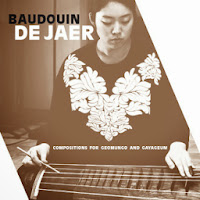 |
| Edward and Marian MacDowell (Library of Congress) |
MacDowell was born in New York in 1860 and displayed so much musical talent that his family moved to Paris so that he could study there. He was successful at the Paris Conservatoire and moved on to study and teach in Frankfurt, Germany.
 This is where he met his future wife, Marian Griswald Nevins, who was a piano student of his. They married in 1884 and stayed in Germany for a while and then moved back to the United States, living in Boston until he received an offer in 1896 to teach at Columbia University in New York City. He was that university's first music professor Around this same time, Marian purchased Hillcrest Farm in Peterborough, New Hampshire, which they used as their summer residence. In 1904, after a sabbatical leave, MacDowell had a public feud with university administrators and resigned from Columbia.
This is where he met his future wife, Marian Griswald Nevins, who was a piano student of his. They married in 1884 and stayed in Germany for a while and then moved back to the United States, living in Boston until he received an offer in 1896 to teach at Columbia University in New York City. He was that university's first music professor Around this same time, Marian purchased Hillcrest Farm in Peterborough, New Hampshire, which they used as their summer residence. In 1904, after a sabbatical leave, MacDowell had a public feud with university administrators and resigned from Columbia.The MacDowells flourished in their New Hampshire home where Edward composed music and wrote poetry with nature as his inspiration. Although he composed music for other instruments and ensembles, he is best known for his solo piano music. Four sets of short piano pieces are at the top of his Greatest Hits list: Woodland Sketches, Sea Pieces, Fireside Tales, and New England Idyls. "To A Wild Rose" is part of Woodland Sketches. MacDowell was a true romantic, naming his pieces with descriptive titles and sometimes even adding poems to the sheet music. (This hadn't been done before.) His Indian Suite was built upon authentic Native American themes, one of the earliest examples of Native American themes in art music.
Edward's story has a sad ending. He was run over by a Hansom cab in 1904, and this exacerbated an existing condition (syphilis) while also contributing to dementia. His career was over, and he spent his days in a chair by a window, paging through a book of fairy tales, usually recognizing his close friends. He died in 1908 in New York City and was buried at Hillcrest Farm in New Hampshire.
The MacDowells' story doesn't end there. Before his accident, Edward had the idea that he would like to share Hillcrest Farm with other artists so that they could enjoy the bucolic and inspirational setting. The couple was able to line up a group of investors that included Grover Cleveland, Andrew Carnegie, and J. Pierpont Morgan. The group set up a fund which established the MacDowell Colony that still exists today. Before he died, Edward was able to see the first group of participants arrive. Marian toured the country as a pianist and promoted the colony at the same time. When she was in New Hampshire she oversaw the endeavor. She outlived Edward by about fifty years and nurtured thousands of artists, musicians, writers, and dancers at the MacDowell Colony. Leonard Bernstein wrote his Mass there, and Thornton Wilder wrote Our Town. Just about anyone who is anyone has had a residency at the MacDowell Colony. In 1997, the MacDowell Colony was awarded the National Medal of Arts.








